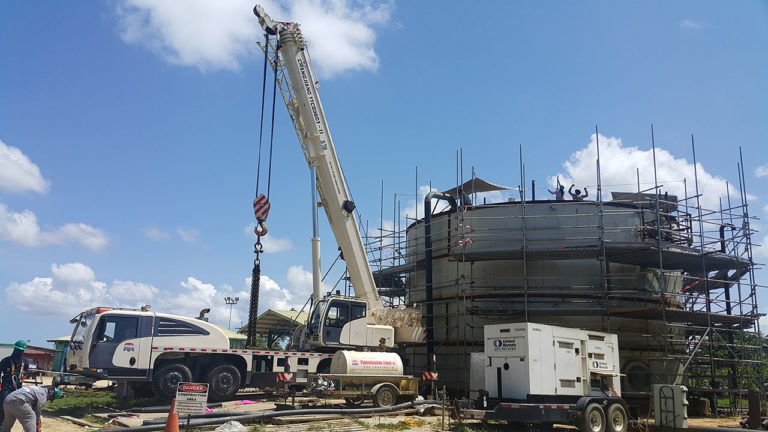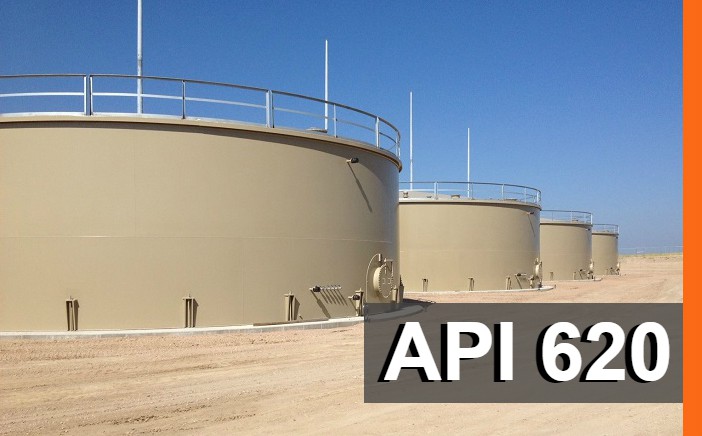All Concerning Welding Assessment: Secret Benefits for Your Jobs
Welding inspection plays a crucial duty in the building and construction and production markets. It assures that bonded joints fulfill top quality and security standards. By recognizing flaws early, jobs can stay clear of substantial delays and monetary losses. Following sector standards not just secures the integrity of the end product however also constructs count on among stakeholders. Recognizing the nuances of this process exposes fringe benefits that can affect task end results significantly. What are these benefits?
Comprehending the Welding Examination Refine
Welding is an essential component in numerous industries, the inspection procedure is important to guarantee top quality and security. This procedure entails a collection of methodical assessments designed to determine any kind of potential problems that may jeopardize the integrity of bonded joints. Initially, inspectors examine welding treatments and certifications to confirm compliance with sector standards.
Following this, visual inspections are carried out to assess the overall appearance and coating of welds. Non-destructive testing strategies, such as ultrasonic or radiographic testing, might likewise be utilized to detect interior problems without harming the material. Paperwork plays an essential role, as it offers a document of examinations and searchings for, confirming traceability and responsibility.
Inevitably, understanding the welding inspection process fosters self-confidence in the top quality of the ended up product, lowers the risk of failings, and enhances general project success in numerous applications, from building and construction to manufacturing. API 650 Welding Inspection.
Common Types of Welding Problems
Welding problems can greatly influence the integrity and performance of welded structures, as they may lead to failings under tension or adverse problems. Common kinds of welding flaws consist of cracks, porosity, incomplete combination, and slag inclusion. Cracks can create because of thermal stress and anxieties or improper air conditioning, compromising the joint's strength. Porosity refers to the presence of gas bubbles caught in the weld, which can deteriorate the joint and reduce ductility. Insufficient blend happens when the weld metal does not appropriately bond with the base material, resulting in vulnerable points. Slag incorporation takes place when non-metallic pollutants end up being caught within the weld, bring about a reduction in structural stability. Recognizing these flaws early via inspection is vital for preserving top quality and making sure security in bonded structures. Understanding these usual flaws enables enhanced welding techniques and boosted project end results.
Value of Conformity With Market Specifications
Compliance with industry criteria is essential for maintaining structural integrity in welding projects. Sticking to these standards not only mitigates obligation risks yet also boosts the general top quality of the ended up job. This positioning cultivates trust fund among stakeholders and warranties that projects satisfy both security and performance assumptions.
Making Certain Architectural Stability
Assuring structural integrity is vital in any kind of building and construction or manufacturing job, as adherence to sector standards serves as a foundation for safety and reliability. Conformity with these standards assurances that welding refines meet extensive specs, which is important for the sturdiness of structures. Routine welding assessments verify that materials and methods straighten with developed guidelines, preventing prospective failings that can compromise honesty. Furthermore, following industry requirements promotes uniformity in quality, which is crucial for keeping public count on construction techniques. By prioritizing structural honesty via attentive adherence to criteria, organizations can boost the total performance of their projects, causing much safer settings and extended property life expectancies. Eventually, this commitment reflects a positive method to high quality assurance in welding practices.
Minimizing Responsibility Threats
Complying with sector requirements considerably reduces responsibility risks connected with welding tasks. Compliance with established standards warranties that welds satisfy safety and security and efficiency requirements, decreasing the possibility of failures that could result in accidents or litigation. This aggressive method not just secures the workforce however likewise safeguards the economic passions of the firm. Poor inspections or substandard practices can result in pricey repair services, legal disputes, and damages to track record. By applying rigorous welding evaluations, business demonstrate their commitment to high quality and safety, ultimately lessening direct exposure to prospective cases. Furthermore, adherence to guidelines strengthens trust among customers and stakeholders, as it shows a devotion to keeping high criteria throughout the project lifecycle. Lowering responsibility threats is essential for long-term business sustainability.
Enhancing Project Quality
Rigorous welding examinations not just alleviate liability risks however likewise play a crucial function in boosting general job top quality. By sticking to market criteria, these examinations assure that welds satisfy specified requirements for safety and security, toughness, and resilience. Conformity with developed guidelines aids determine problems early, minimizing the probability of expensive rework or task hold-ups. Regular high quality control fosters trust among stakeholders, consisting of clients and regulatory bodies, which can lead to duplicate service and favorable recommendations. Inevitably, a dedication to top quality welding practices not just improves the honesty of the end product yet likewise supports the credibility of the company involved. Extensive inspections offer as a foundation for sustainable and successful project outcomes.
Effective Advantages of Early Detection of Issues
Early discovery of welding concerns uses substantial benefits, particularly pertaining to expense financial savings on repairs. By identifying problems prior to they rise, companies can boost the architectural stability of their projects. This positive method not only minimizes economic expenses yet also promotes security and dependability in welded structures.
Price Cost Savings on Services
Identifying welding concerns quickly can lead to substantial cost savings on repair work. Early recognition of defects permits targeted interventions, decreasing the degree of damages and protecting against expensive, extensive repairs later. When issues are resolved throughout the preliminary stages of a job, sources are used more successfully, lowering both labor and material costs. Furthermore, timely examinations can avoid project hold-ups, which frequently incur extra expenses. By rectifying problems early, firms can stay clear of the financial burden related to rework, service warranty insurance claims, and prospective safety threats. Eventually, spending in proactive welding evaluations promotes a more affordable strategy to task monitoring, making certain that budget plans stay intact while keeping the high quality and integrity of the end product.
Boosted Structural Honesty
Making sure the architectural honesty of bonded parts depends upon the timely recognition of potential problems. Early detection during the welding evaluation process enables for the immediate rectification of issues such as splits, voids, or incorrect combination. Resolving these concerns quickly not just enhances the strength and resilience of the weld however additionally minimizes the threat of catastrophic failures throughout the life span of the framework. Regular assessments add to an extra reliable analysis of weld top quality, guaranteeing compliance with industry criteria. By focusing on welding assessments, job managers can keep a greater degree of security and performance, eventually resulting in effective job results. Enhanced architectural honesty shows the commitment to top quality and adherence to ideal methods in welding.
Cost-Effectiveness of Welding Inspections
While several business may see welding assessments as an extra cost, they usually confirm to be a cost-efficient financial Related Site investment in the long run. By recognizing flaws early, these examinations can avoid costly repair services or substitutes that may develop from undiscovered problems. This aggressive approach not only conserves cash however additionally lessens job hold-ups, making sure that timelines are complied with.

Additionally, top quality welding assessments add to boosted effectiveness, bring about less rework instances and improved performance. The decrease in product waste and labor prices linked with remodeling defective welds includes to the financial advantages.
Spending in detailed examinations additionally improves the total top quality of the end product, which can bring about increased client contentment and repeat company. Inevitably, the preliminary costs connected with welding inspections are typically outweighed by the long-term cost savings and benefits they supply, making them a smart option for any welding task.
Enhancing Safety And Security and Dependability in Welding Projects

Welding assessments play a crucial role in enhancing safety and reliability within welding jobs, as they systematically recognize potential hazards and visit weak points in welds. By using qualified examiners, companies can ensure that welding procedures comply with industry criteria and regulative requirements. This positive strategy reduces the threat of weld failures, which can bring about accidents, pricey repairs, and job hold-ups.
Assessments offer necessary paperwork that verifies compliance and top quality guarantee, cultivating trust fund between stakeholders. Regular analyses during numerous job phases permit for the prompt detection of issues, enabling corrective actions before they escalate. Additionally, the insights gained from evaluations add to continuous improvement in welding practices, boosting general project end results. Eventually, robust welding examination methods not only safeguard employees however likewise secure financial investments, assuring that jobs are completed effectively and fulfill the highest security and reliability requirements.
Regularly Asked Inquiries
What Credentials Should a Welding Examiner Have?
A welding assessor ought to possess pertinent qualifications, such as Qualified Welding Assessor (CWI), along with considerable understanding of welding materials, procedures, and codes. API 650 Welding Inspection. Experience in the area and solid analytical abilities are also crucial for efficient inspections
Exactly How Often Should Welding Inspections Be Carried Out?
Welding assessments should be performed routinely, commonly previously, during, and after the welding process. The regularity might depend on task specs, governing demands, and the intricacy of the welds to assure architectural honesty and safety.
Can Welding Inspections Be Performed Remotely?
Welding assessments can indeed be performed from another location, utilizing advanced modern technologies such as drones, cams, and ultrasonic screening tools - API 650 Welding Inspection. This strategy permits effective surveillance while decreasing the need for physical existence at the site
What Equipment Are Utilized in Welding Inspections?
Welding assessments use various devices, including ultrasonic testers, magnetic fragment testers, aesthetic assessment tools, radiographic equipment, and calipers. Each tool serves a particular objective to assure weld integrity, quality, and compliance with market criteria.
Exactly how Do I Pick a Welding Examination Service?

To select a welding inspection service, one need to evaluate credentials, experience, and accreditations. Additionally, reviewing client reviews and requesting in-depth service summaries can aid assure the selected service fulfills details project requirements successfully.
By focusing on welding assessments, job supervisors can keep a greater level of safety and security and performance, ultimately leading to successful task end results. Welding inspections play an important role in enhancing safety and integrity within welding jobs, as they systematically recognize potential hazards and weaknesses in welds. A welding inspector must have pertinent qualifications, such as Licensed Welding Inspector (CWI), along with considerable expertise of welding codes, procedures, and products. Welding inspections should be conducted on a regular basis, normally before, throughout, and after the welding process. Welding inspections use numerous devices, including ultrasonic testers, magnetic bit testers, aesthetic evaluation tools, radiographic devices, and calipers.